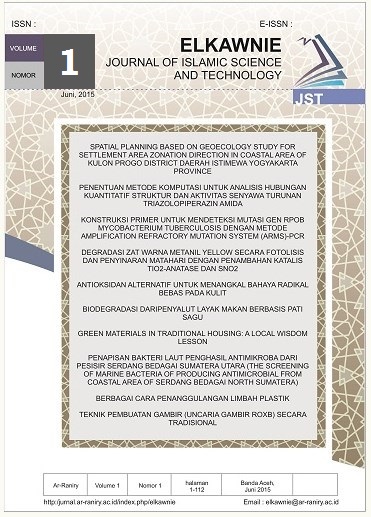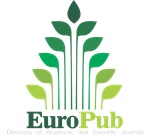Spatial Planning Based on Geoecology Study For Settlement Area Zonation Direction in Coastal Area of Kulon Progo District Daerah Istimewa Yogyakarta Province
DOI:
https://doi.org/10.22373/ekw.v1i1.514Keywords:
Geoecology, Settlement Direction, Coastal AreaAbstract
This research was conducted at Kulon Progo coastal area of Daerah Istimewa Yogyakarta Province. The objectives were to define geoecosystem units spread by examining constituent parameters of coastal geoecology system, to evaluate suitability of existing settlement zone regarding the characteristic of geoecology type, to inventory environment issues and to set the direction of settlement zone development which accommodates the characteristic of geoecology type. This research used geoecology approach based on geomorphology process and landform as a basic setting of geoecosystem unit as an analytical unit. The Method used was a survey using stratified random sampling technique. Data analysis was arranged descriptively and by spatial modeling using Arc Gis version 9.3 software. This research produced the identification of geoecosystem units in this area.The identified largest area were dominated by coastal alluvial plain geoecosytem unit and sand dunes geoecosystem unit ,by 2.685,461 Ha (43,05%) and 1.986,121Ha (31,84%), respectively. Old beach ridge geoecosistem unit and coastal alluvial plain were the most suitable, based on geoecology characteristic, as a direction of settlement area zonation development. This recommendation of comprehensive settlement zonation was set to solve whole environment issues and integrated by involving whole stakeholders. Keywords :Downloads
Published
Issue
Section
License
Proposed Policy for Journals That Offer Open Access Authors who publish with the Elkawnie journal agree to the following terms:
a. Authors retain copyright and grant the journal right of first publication with the work simultaneously licensed under a Creative Commons Attribution License that allows others to share the work with an acknowledgement of the work's authorship and initial publication in this journal.
b. Authors are able to enter into separate, additional contractual arrangements for the non-exclusive distribution of the journal's published version of the work (e.g., post it to an institutional repository or publish it in a book), with an acknowledgement of its initial publication in this journal.
c. Authors are permitted and encouraged to post their work online (e.g., in institutional repositories or on their website) prior to and during the submission process, as it can lead to productive exchanges, as well as earlier and greater citation of published work (see The Effect of Open Access).

























